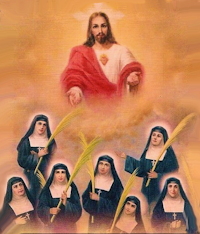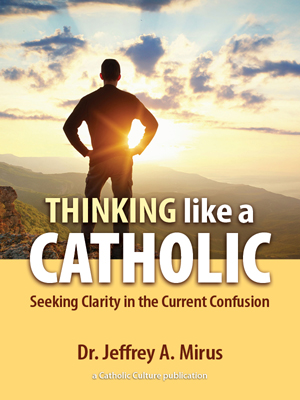Ordinary Time: August 3rd
Thursday of the Seventeenth Week in Ordinary Time
Other Commemorations: Martyrs of the Spanish Civil War (RM); Finding of the Body of St. Stephen, Protomartyr (Hist)
» Enjoy our Liturgical Seasons series of e-books!
Today the Roman Martyrology commemorates the Martyrs of the Spanish Civil War who were clergy, religious, and laypersons executed during the Spanish Civil War, in a period known as the Red Terror. It is estimated that in the course of the Red Terror 6,832 members of the Catholic clergy were killed.
Historically this was the Finding of the Body of St. Stephen, the first martyr. His body was discovered in 415 just outside Jerusalem. It was translated to Constantinople in 439 by the Empress Eudoxia, but part of the remains were taken to Rome to the Church of St. Lawrence Outside the Walls where they lie beside those of the great Roman deacon.
Martyrs of the Spanish Civil War
 Martyrs of the Spanish Civil War is the name given by the Catholic Church to the people who were killed by Republicans during the war, because of their faith. During this Civil War of 1936-1939, and especially in the early months of the conflict, individual clergymen were executed while entire religious communities were persecuted, leading to a death toll of 13 bishops, 4,172 diocesan priests and seminarians, 2,364 monks and friars and 283 nuns, for a total of 6,832 clerical victims, as part of what is referred to as Spain’s Red Terror, besides the numerous laity.
Martyrs of the Spanish Civil War is the name given by the Catholic Church to the people who were killed by Republicans during the war, because of their faith. During this Civil War of 1936-1939, and especially in the early months of the conflict, individual clergymen were executed while entire religious communities were persecuted, leading to a death toll of 13 bishops, 4,172 diocesan priests and seminarians, 2,364 monks and friars and 283 nuns, for a total of 6,832 clerical victims, as part of what is referred to as Spain’s Red Terror, besides the numerous laity.
Pope John Paul II was the first pope to beatify a large number of martyrs from the Spanish Civil War. Pope Benedict XVI beatified 498 more Spanish martyrs in October 2007, in the largest beatification ceremony in the history of the Catholic Church.
Among the 498 martyrs beatified in October 2007, figure Mother Manuela Arriola and companions – the 23 Martyrs Adorers. Four more Adorers are in the process of being beatified. Thus the Congregation of Sisters Adorers is honoured with 27 Martyrs, being true to the desire of our Holy Foundress, St Maria Micaela, who wanted the candidates who wished to follow the Adorers’ life-style to have the vocation to martyrdom.
The two years prior to the Nationalist Movement were, as we know, years of general calamities for the whole of Spain. Madrid was razed by hunger and misery, so much so that if one had not experienced it from close ranges, its description could appear as a fable or a fiction.
On the 28th of July, 1936, the spacious convent at no.7, Duke of Osuna street, the headquarters of the general government of Sisters Adorers was confiscated by the government to designate it as a blood hospital. The militiamen, rifle in their hands in cars aided by them drove the sisters as they considered convenient. It was a common belief that it would take only a few days until the situation would be normalized. How unaware they were of the sad reality that was approaching.
 The Superior General of the Sisters Adorers very earnestly looked for ways and means to protect the sisters from the dangers to which they would be exposed. She found several flats where the sisters from the Generalate house were accommodated and those who came to Madrid and several other cities where they faced the same risk. A group of 23 sisters settled themselves in the flat rented at No.15 Constanilla de Los Angeles Street.
The Superior General of the Sisters Adorers very earnestly looked for ways and means to protect the sisters from the dangers to which they would be exposed. She found several flats where the sisters from the Generalate house were accommodated and those who came to Madrid and several other cities where they faced the same risk. A group of 23 sisters settled themselves in the flat rented at No.15 Constanilla de Los Angeles Street.
On November 9, 1936, by mid-afternoon, a terrible bombarding started near the house. As customary in such moments, they went down to the mezzanine floor, where the owner of the house sheltered them. A group of militiamen entered the porch screaming ‘The nuns! Where are the nuns? And by pushing and pulling they put them all into a truck.
Everything took place in a span of a few hours. They were arrested and taken to the nearest jail. At the dawn of November 10th, the 27 Sisters Adorers were shot dead, because of their unwavering Christian faith. Their life was not taken away from them, it was given up willingly, without hiding themselves or escaping when faced with danger. All of them knew that martyrdom awaited them and they welcomed it as His Handmaids!
They incarnated the words they spoke……
“Let us eagerly await death, for love of God”
“With trust placed in God we will move forward”.
“Lord, what do you want from us? Are you happy with your Handmaids?”
“Lord, we trust that you will not give us more than what we can endure.”
‘Good-bye, until we meet in heaven…”
—Excerpted from the Congregation of Sisters Adorers Handmaids of the Blessed Sacrament and of Charity
Highlights and Things to Do:
- Read The Martyrs of Spain's Civil War in the Catholic Culture Library.
- Learn more about the Martyrs:
The Finding of the Body of St. Stephen
 The second festival in honor of the holy protomartyr St. Stephen was instituted by the Church on the occasion of the discovery of his precious remains. His body lay long concealed, under the ruins of an old tomb, in a place twenty miles from Jerusalem, called Caphargamala, where stood a church which was served by a venerable priest named Lucian.
The second festival in honor of the holy protomartyr St. Stephen was instituted by the Church on the occasion of the discovery of his precious remains. His body lay long concealed, under the ruins of an old tomb, in a place twenty miles from Jerusalem, called Caphargamala, where stood a church which was served by a venerable priest named Lucian.
In the year 415, on Friday, the 3rd of December, about nine o'clock at night, Lucian was sleeping in his bed in the baptistery, where he commonly lay in order to guard the sacred vessels of the church. Being half awake, he saw a tall, comely old man of a venerable aspect, who approached him, and, calling him thrice by his name, bid him go to Jerusalem and tell Bishop John to come and open the tombs in which his remains and those of certain other servants of Christ lay, that through their means God might open to many the gates of His clemency. This vision was repeated twice. After the second time, Lucian went to Jerusalem and laid the whole affair before Bishop John, who bade him go and search for the relics, which, the Bishop concluded, would be found under a heap of small stones which lay in a field near his church. In digging up the earth here, three coffins or chests were found. Lucian sent immediately to acquaint Bishop John with this. He was then at the Council of Diospolis, and, taking along with him Eutonius, Bishop of Sebaste, and Eleutherius, Bishop of Jericho, came to the place.
Upon the opening of St. Stephen's coffin the earth shook, and there came out of the coffin such an agreeable odor that no one remembered to have ever smelled anything like it. There was a vast multitude of people assembled in that place, among whom were many persons afflicted with divers distempers, of whom seventy-three recovered their health upon the spot. They kissed the holy relics, and then shut them up. The Bishop consented to leave a small portion of them at Caphargamala; the rest were carried in the coffin with singing of psalms and hymns, to the Church of Sion at Jerusalem. The translation was performed on the 26th of December, on which day the Church has ever since honored the memory of St. Stephen, commemorating the discovery of his relics on the 3rd of August probably on account of the dedication of some church in his honor.
—Excerpted from Butler's Lives of the Saints
Highlights and Things to Do:
- Read the more about the Finding:
- Read about the relics of St. Stephen and also about the rock relic.








